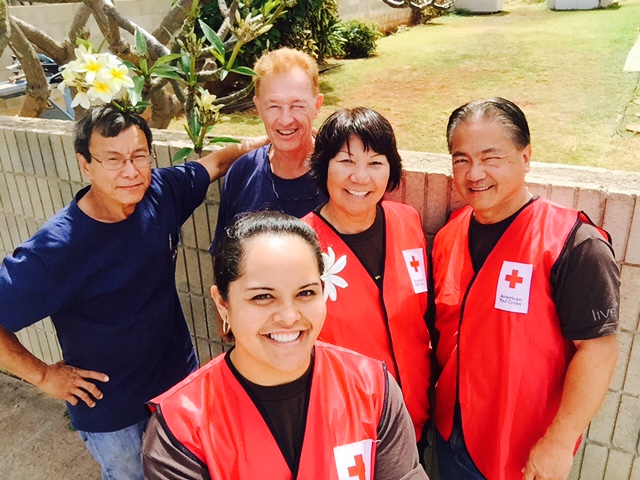The first line of defense in any home fire is working smoke alarms, which are proven to cut the risk of death and home fires.
As part of a campaign spearheaded by the American Red Cross to reduce the number of fire deaths and injuries in the U.S. by 25% in five years, First Insurance teamed up with Red Cross Hawaii, the International Brotherhood of Electrical Workers, and Honolulu Fire Department over two days in January and April 2015 to install fire alarms in neighborhood homes and talk about home fire safety and prevention. Altogether, volunteers installed nearly 600 smoke alarms in 150 homes.
Watch this Apr. 14, 2015 KHON news clip about the campaign: http://khon2.com/2015/04/14/red-cross-helps-install-smoke-alarms-shares-fire-safety-tips/
Here are tips to keep your home and family members safe.
Smoke Alarms:
- Install smoke alarms inside and outside each bedroom and sleeping area. Install alarms on every level of the home.
- Install alarms in the basement.
- Test all smoke alarms at least once a month. Press the button to be sure the alarm is working.
- A smoke alarm should be on the ceiling or high on a wall.
- Keep smoke alarms away from the kitchen to reduce false alarms. They should be at least 10 feet (3 meters) from the stove.
- Replace all smoke alarms when they are 10 years old.
Cooking:
- Cooking fires are the number one cause of home fires and injuries. Stay in the kitchen when you are frying, grilling, boiling, or broiling food.
- Keep anything that can catch fire – oven mitts, wooden utensils, food packaging, towels or curtains – away from your stovetop.
- If you have a small (grease) cooking fire on the stove top, smother the flames by slide a lid over the pan and turning off the burner. Leave the pan covered until it is completely cooled.
- For an oven fire, turn off the heat and keep the door closed.
- If you have any doubt about fighting a small fire, just get out! When you leave, close the door behind you to help contain the fire.
- Call 9-1-1 from outside the home.
Candles:
- Blow out all candles when you leave the room or go to bed. Avoid the use of candles in the bedroom and other areas where people may fall asleep.
- Keep candles at least 12 inches away from anything that can burn.
Electrical:
- Have all electrical work done by a qualified electrician.
- Only plug one heat-producing appliance (such as a coffee maker, toaster, space heater, etc.) into a receptacle outlet at a time.
- Major appliances (refrigerators, dryers, washers, stoves, air conditioners, etc.) should be plugged directly into a wall receptacle outlet. Extension cords and plug strips should not be used.
- Check electrical cords to make sure they are not running across doorways or under carpets.
- Use light bulbs that match the recommended wattage on the lamp or fixture.
Escape planning:
- Make a home escape plan. Discuss the plan with everyone in your home.
- Know at least two ways out of every room, if possible. Make sure all doors and windows leading outside open easily.
- Have an outside meeting place a safe distance from the home where everyone should meet.
- Practice your home fire drill twice a year.
- Practice using different ways out.
- Teach children how to escape on their own in case you can’t help them.
- Close doors behind you as you leave.
Tips source: National Fire Protection Association

